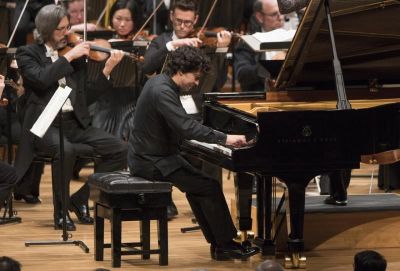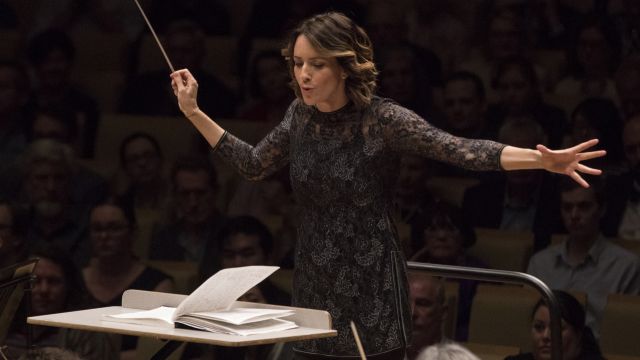Soloists and Spontaneity
The overriding theme of this Maestro, series with works by Igor Stravinsky, Bela Bartok and Sergei Rachmaninov, was that they were all works that premiered in America.
Rachmaninov composed his Piano Concerto No.3 in September 1909 when he was thirty-six. He first performed the work in New York two months later in November 1909 with the New York Symphony Society Orchestra. The work is the showpiece of this concert. Fiendishly difficult are words that are overused in the classical canon, but that’s exactly what this work is and QSO’s Artist-in-Residence Sergio Tiempo proved his pianistic ability time and time again delivering a performance of extraordinary prowess and excitement. His fiery and arresting cadenza of the first movement gave way to an andante section that had intense depth and beauty. His passion was relentless, as was Alondra de la Parra’s superb orchestral control.
Stravinsky’s chamber Concerto in E-flat or Dumbarton Oaks as it is commonly known was a dynamic opener. Commissioned for the thirtieth wedding anniversary of Robert and Mildred Woods Bliss of Washington DC, the work premiered at their estate in 1938 and was heavily inspired by Bach’s Brandenburg Concertos. The final con moto brimmed with vitality, whilst the allegretto featured some ravishing work by the wind instruments, especially flute.

Bartok’s Concerto for Orchestra closed the concert. Commissioned by the Koussevitzky Foundation, it was premiered by the Boston Symphony in 1944 and became one of the composer’s best-known works. The piece is brimful of tunes and folk melodies, the most memorable being the second movement’s jaunty dance of the bassoons and the fourth’s changing time-signatures with a ‘mocking’ quote from Shostakovich’s Leningrad Symphony that in itself quoted Franz Lehar’s “Maxims” from The Merry Widow. The orchestra were in their element as each section was individually showcased which culminated in an exciting presto finale.
In the bows, when de la Parra acknowledged each section, the audience went wild. It was well-earned and well-deserved praise.
Peter Pinne
Subscribe to our E-Newsletter, buy our latest print edition or find a Performing Arts book at Book Nook.

